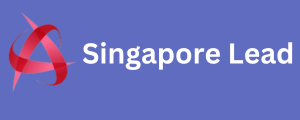Lead generation is a dynamic and multi-faceted process that requires a deep understanding of your audience, a strong value proposition, and a strategic mix of tools and tactics. From content creation and SEO to email marketing and paid ads, every step plays a role in building and nurturing customer relationships.
Businesses that invest time and shop resources into lead generation not only grow their customer base but also strengthen their brand and competitive edge. With the right strategy, consistent optimization, and a focus on delivering real value, you can generate high-quality leads that fuel long-term business success.
Once a lead is captured, it’s essential Email Marketing to nurture
The relationship until the prospect is ready how to make marketing decisions based on database analysis to buy. Email marketing is one of the most effective channels for this purpose. A lead nurturing campaign typically includes a series of automated emails designed to educate, inform, and build trust with the lead. These emails may contain blog articles, product information, case studies, testimonials, or personalized offers. Segmentation plays a vital role in ensuring the content is relevant to the recipient’s interests or stage in the buyer journey. Timing and frequency also matter—sending too many emails can lead to unsubscribes, while too few may result in lost interest. Modern email platforms allow businesses to track open rates, click-throughs, and engagement to optimize performance. When executed well, email marketing can guide leads smoothly from interest to conversion, significantly improving sales outcomes and return on investment.
Using Social Media to Attract Leads
Social media platforms offer vast bulgaria business directory opportunities for lead generation, particularly for B2C and even B2B companies. Platforms like Facebook, LinkedIn, Instagram, and Twitter enable businesses to share content, engage with audiences, and run targeted advertising campaigns. Each platform has unique features: LinkedIn excels in professional networking and lead capture through lead-gen forms, while Instagram offers visual storytelling and brand exposure. Paid advertising on social media allows for precise targeting based on demographics, interests, behaviors, and more.
Live sessions, polls, and user-generated content can boost engagement and build trust. Consistent posting, responsive interaction, and community-building are key to maintaining interest. Many tools also allow social media leads to be integrated with CRM systems for seamless tracking. By leveraging both organic and paid strategies, businesses can increase their visibility and attract potential customers efficiently. Social media remains a dynamic channel that, when used strategically, can generate a steady stream of leads.
